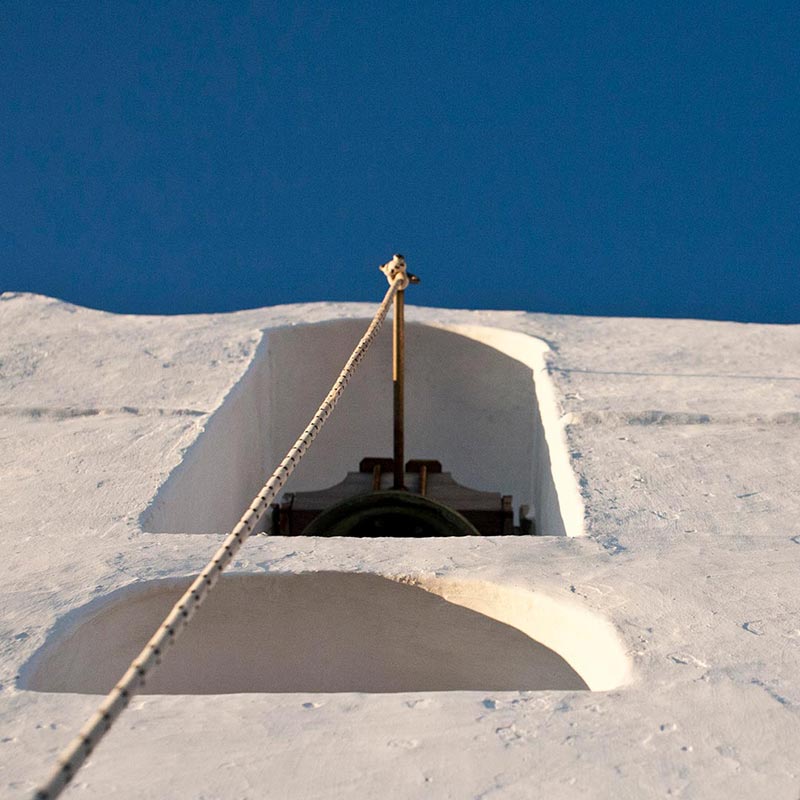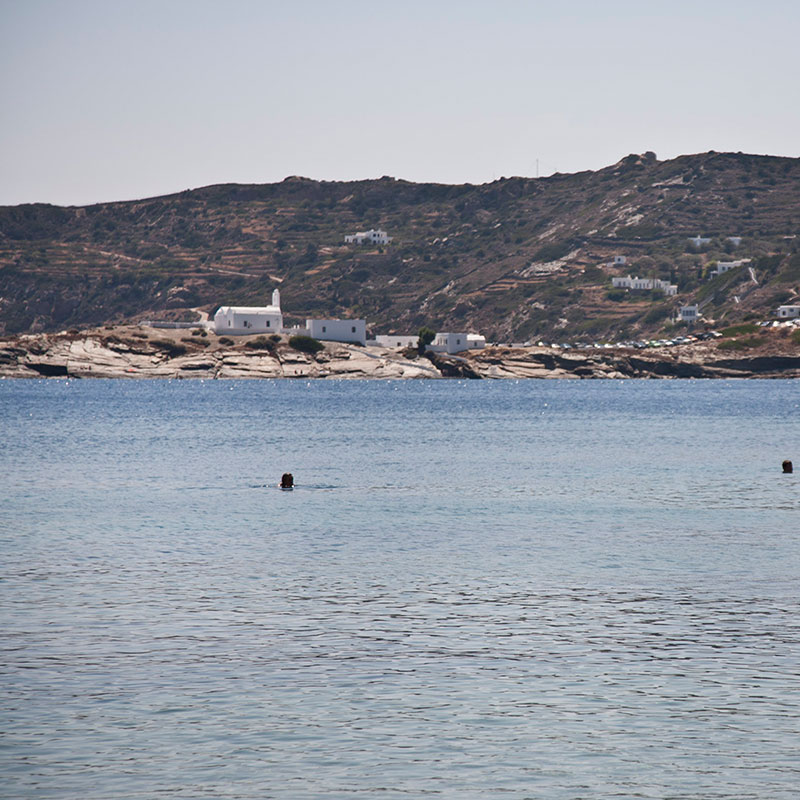Experience a Traditional Greek Easter in Sifnos
Easter in Sifnos, a picturesque Cycladic island, is more than a religious holiday – it’s a heartfelt, vibrant celebration rooted in centuries-old traditions. Every spring, this small island transforms into a living canvas of faith, food, music, and natural beauty, offering an unforgettable experience for locals and visitors.
Easter Atmosphere in Sifnos
As spring arrives, the island bursts into life. All the houses are whitewashed in preparation, and gardens bloom with color. The natural beauty of Sifnos creates a truly beautiful setting for Orthodox Easter celebrations. The paved streets, decorated with flowers and lit by the soft glow of church candles, welcome visitors into a world of tradition and heartfelt devotion.
Preparations Before Holy Week
In the days leading up to Holy Week, young people and families take part in village clean-ups and decorate the churches. The air fills with excitement and anticipation, especially after Lazarus Saturday when many villages begin preparations for the first liturgies. Whitewash is refreshed on every courtyard and staircase, and the scent of local red wine and herbs like oregano and thyme fills the breeze.
Holy Week: A Sacred Journey
Holy Week on the island is a time of reverence. Church bells ring across several villages, marking each day with a special rhythm. Cultural associations and locals prepare for events with deep respect for Orthodox Church traditions.
Holy Thursday Traditions
On Holy Thursday, the women of Sifnos bake Sifnian “easter birds”—traditional breads shaped like birds and animals. These Easter treats are decorated with red eggs, a symbol of Christ’s blood and rebirth, and often shared with family, friends, and neighbors. The island fills with sweet aromas of cinnamon, anise, and fresh dough.
Good Friday: A Night of Reflection
Good Friday is one of the most moving evenings in Sifnos. In the morning, villagers gather flowers from gardens and fields to decorate the Epitaphios. By Good Friday night, all the churches of the island hold a procession through the village cobbled streets. In Artemonas, three Epitaphs from nearby churches—Agios Konstantinos, Agios Loukas, and the Church of the Virgin—meet in the central square, accompanied by hymns, candles, and silent reverence.
Holy Saturday Morning and The Resurrection Service
Holy Saturday morning is a time for final preparations. In kitchens, lamb and goat are slowly cooked in traditional clay pots with local red wine, dill, and vine branches—a dish known as “mastelo”. As midnight approaches on Holy Saturday, anticipation fills the air. Villagers and visitors gather outside the churches—some quietly reflective, others simply drawn by the beauty of the moment. When the clock strikes twelve, the church bells ring joyfully and the priest proclaims the resurrection of Jesus Christ.
With glowing candles in hand, the crowd echoes the traditional Greek Easter greeting: “Christos Anesti!” (Christ is risen!). The response, “Alithos Anesti!” (Truly he is risen!), is exchanged among friends, family, and even strangers. It’s a moment of unity and joy, as firecrackers light up the night sky and smiles are shared all around.
Following the service, families return home to break the Lenten fast with warm bowls of magiritsa (Easter soup) and to crack red eggs in a friendly game that symbolizes new life. The long-awaited celebration of Easter Sunday has officially begun.
Easter Sunday: Celebration and Joy
Easter Sunday begins with a joyful spirit. Families gather for lunch, serving lamb, local cheese, fresh bread, and local delicacies. Music and laughter fill the air as traditional dances take over the village squares. The cultural association of Sifnos often organizes performances with traditional music and games.
Easter Sunday brings joy, music, and community. After the Agape Vespers at noon, where the Gospel is read in many languages, villages come alive with traditional music, dances, and feasts. In Apollonia and Artemonas, live performances and folk dances turn the squares into open-air festivals.
The Burning of Judas
In the evening, the symbolic burning of Judas takes place. An effigy is paraded and then set aflame in the village square, followed by music, fireworks, and shared sweets and wine. This act, organized by the Cultural Association of Sifnos, unites the community in joyful remembrance.
Traditional Games and Cultural Events
Throughout the Easter period, visitors can experience local customs such as the game of “tsounia,” where wooden pins are knocked over with a wooden ball. This game is often played by couples. The “kounistria” or Easter swing, once a courting custom, is also part of local demonstrations. These moments blend entertainment with heritage.
Easter Monday: Calm and Reflection
While Easter Sunday is full of celebration, Easter Monday is quieter. Some attend small services or visit friends, while others enjoy a relaxed day at the beach. If the weather allows, locals often take their first swim of the year.
Orthodox Easter in the Greek Islands
While Easter is celebrated throughout the Greek islands, Sifnos stands out for its spiritual depth and community participation. Unlike other islands, here the celebrations are intimate and deeply felt, blending religious traditions with local customs in a seamless and heartfelt way.
A Taste of Sifnos: Culinary Traditions
Sifnos is the birthplace of the famous Greek chef Nikolaos Tselementes, and Easter is a showcase of the island’s rich gastronomy. From oven-roasted lamb to sweet melopita (a honey pie made with local cheese), every meal tells a story. These dishes are not only delicious but also a connection to centuries-old traditions.
Entertainment and Nightlife
If you’re not particularly drawn to religious traditions, Easter in Sifnos still offers plenty of options to enjoy your evenings. The island’s nightlife during Easter is full of life and energy, especially in the main villages.
Cafés, bars, and restaurants stay open late throughout Holy Week, welcoming both locals and visitors. In the cobbled alleys of Apollonia—the island’s lively hub—you’ll find cozy bars and vibrant spots where music and laughter fill the air until the early hours. Several taverns across the villages also organize live music nights with traditional instruments and dancing, offering a festive atmosphere that blends past and present.
And if spring weather is kind, Easter might even bring your first swim of the season.
Make the Most of Your Easter Trip to Sifnos
To truly embrace the spirit of Easter in Sifnos, don’t just observe—get involved. Whether you’re here for the first time or returning, these experiences will deepen your connection with the island:
- Join the local Easter traditions: From the Good Friday Epitaphios processions to the midnight Resurrection service on Holy Saturday, attending these events lets you witness the heart of Orthodox Easter.
- Explore the island on foot: Sifnos boasts a network of scenic hiking trails that connect charming villages, whitewashed churches, and hilltop monasteries. Spring is the perfect time to enjoy the island’s natural beauty in full bloom.
- Taste the real Sifnos: Step into a traditional taverna and try Easter dishes like mastelo, melopita, and other local delicacies made with love and seasonal ingredients.
Practical Tips for Easter Visitors
Arrive by ferry in the days before Holy Week to enjoy the full experience
Book accommodations early—Easter attracts a large number of visitors
Join the Holy Friday and Easter Sunday processions to feel part of the celebration
Why Experience Easter in Sifnos?
Easter in Sifnos isn’t just something you watch — it’s something you feel. It’s waking up to the scent of spring herbs and fresh paint on the village walls. It’s joining a crowd of strangers in the candlelit silence before midnight. It’s sharing a smile with someone you don’t know, while exchanging the words “Christos Anesti” and “Alithos Anesti.”
Here, Easter brings together everything we love about Greek island life: deep-rooted traditions, genuine hospitality, unforgettable food, and the kind of beauty that sneaks up on you — in a quiet church courtyard, in a plate of mastelo, or in the warmth of a shared dance in the square.
Whether you’re here for the religious ceremonies, the village atmosphere, or just looking for a peaceful way to welcome spring, Sifnos will make you feel like you belong. And chances are, once you’ve experienced Easter here, you’ll want to come back again — not just for the island, but for the feeling.
Kalo Pascha!











